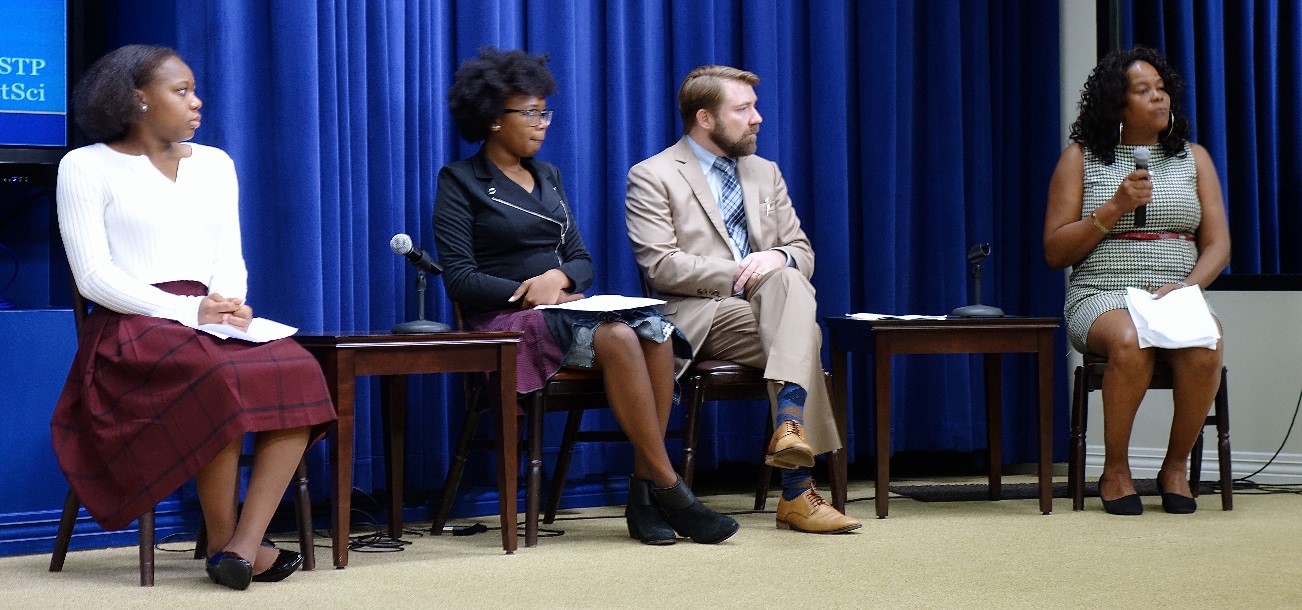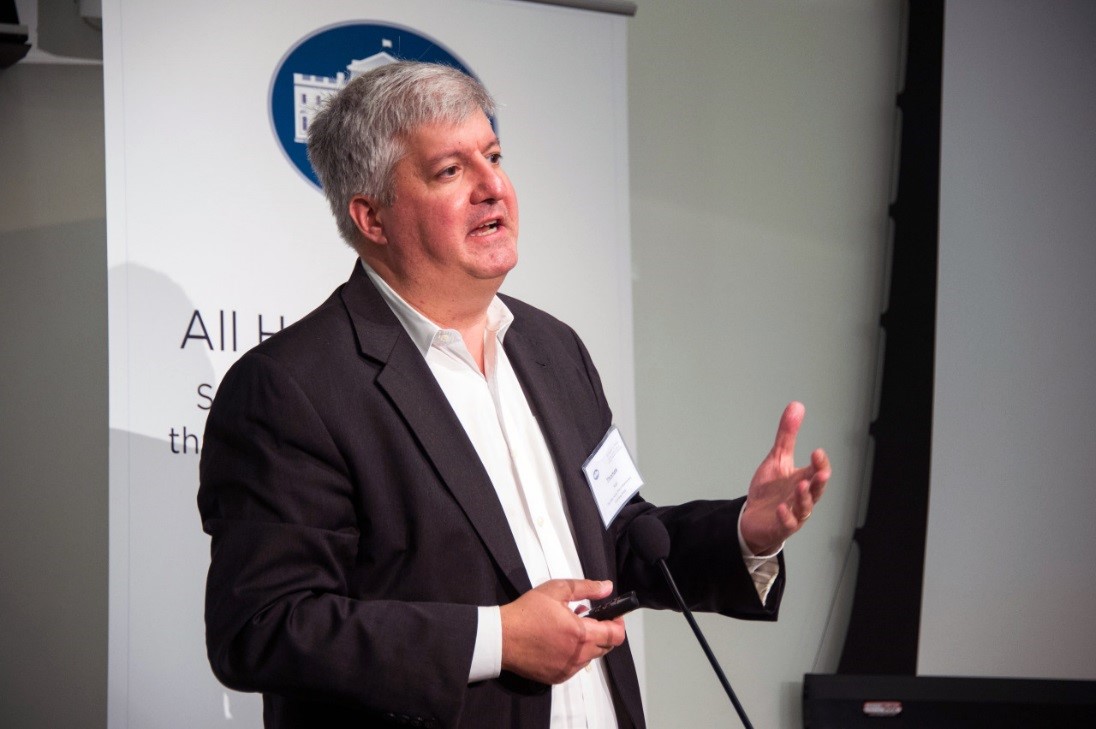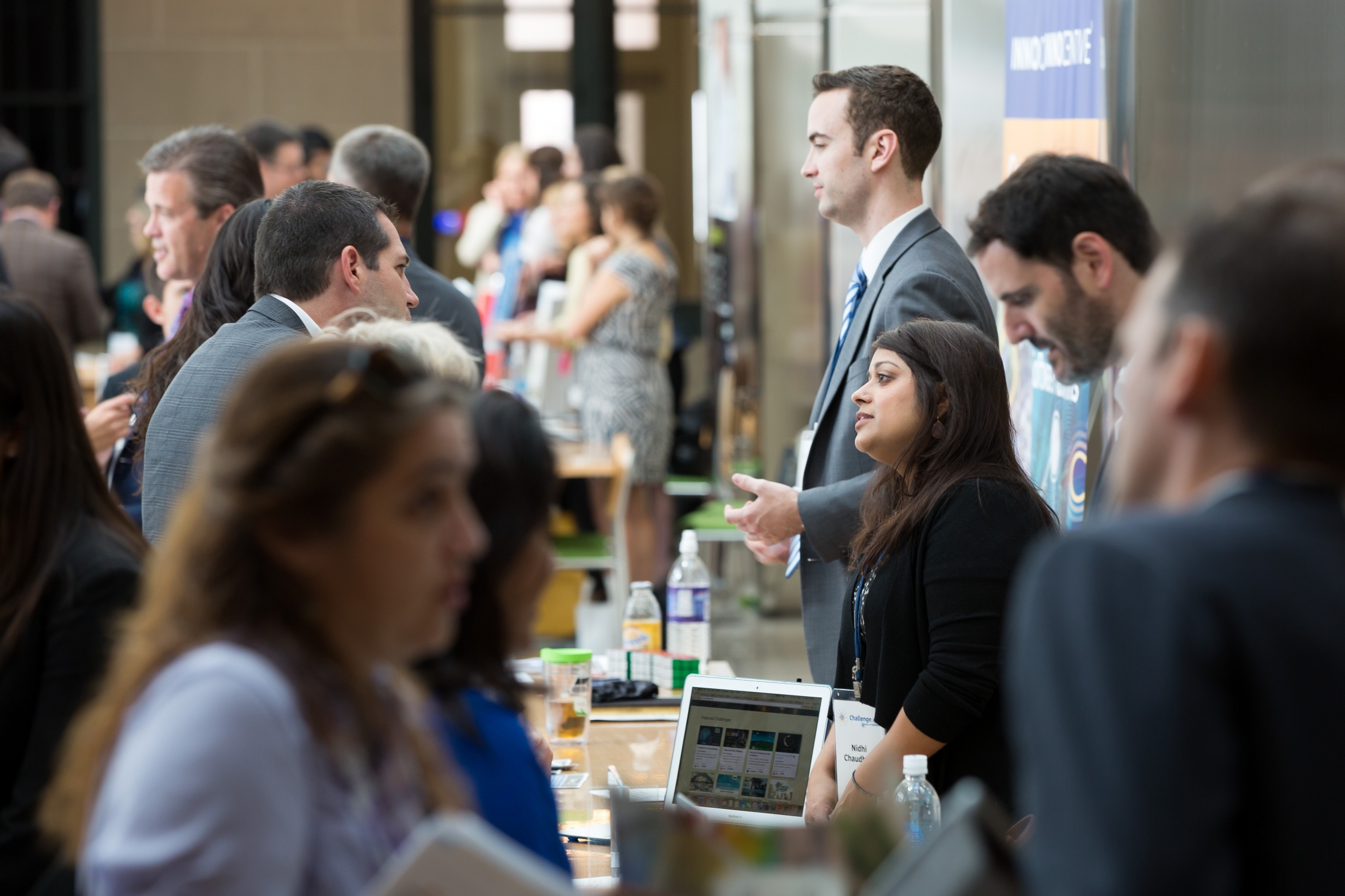
America’s future prosperity depends on our capacity to innovate.
On October 21, 2015, President Obama issued an updated version of the Strategy for American Innovation. A key element of this strategy is a using open innovation and public participation to improve America’s economic growth and international competitiveness. Open innovation—which includes approaches such as incentive prizes, crowdsourcing, and citizen science—harnesses the expertise, ingenuity, and creativity of Americans, engaging them as strategic partners in addressing some of the country’s most pressing challenges. These efforts are premised on Joy’s Law, the principle that “No matter who you are, most of the smartest people work for someone else.”
In December 2013, the Second National Action Plan for Open Government made concrete commitments to advance the use of these approaches by the Federal government, including by developing an open innovation toolkit, releasing more challenges on Challenge.gov, and increasing the use of citizen science and crowdsourcing programs.
The White House, the Federal Community of Practice on Citizen Science and Crowdsourcing (CCS), and the General Services Administration (GSA)’s Challenge.gov program have been working diligently over the last two years to deliver on those commitments. This work was highlighted in a series of events this fall designed to build momentum both within and outside the Federal government for more ambitious, cross-sector applications of open innovation approaches.
For the first of these events, on September 30, 2015 the White House Office of Science and Technology Policy (OSTP) and the Domestic Policy Council (DPC), in collaboration with the Federal Community of Practice on Crowdsourcing and Citizen Science, hosted a live-webcast Citizen Science Forum entitled “Open Science and Innovation: Of the People, By the People, For the People” to raise awareness of citizen science and crowdsourcing inside and outside the Federal government, and to encourage more agencies and Americans to take advantage of these approaches. The event brought together stakeholders from various levels of government, citizen scientists, students, researchers, academics, non-profits, foundations, and representatives from the private sector to participate in cross-sector discussions on how to accelerate and scale bigger, better citizen science and crowdsourcing projects across disciplines and geographic boundaries. The morning forum featured keynote speeches from OSTP Director John Holdren (remarks here), National Science Foundation (NSF) Director France Cordova (remarks here), American Association for the Advancement of Science (AAAS) CEO Rush Holt, Senator Chris Coon (D-DE), and Cooperative Institute for Research in Environmental Sciences (CIRES) Director Waleed Abdalati, as well as presentations by researchers, entrepreneurs, students, and project participants. The forum also provided an opportunity for several new announcements:
- Dr. Holdren released a memorandum to Federal agencies, “Addressing Societal and Scientific Challenges through Citizen Science and Crowdsourcing,” which encourages agencies to properly utilize citizen science and crowdsourcing projects. The memorandum addresses important principles that Federal agencies should consider when designing citizen science and crowdsourcing projects, such as data quality, openness, and public participation, and directed steps that agencies should take in order to facilitate the use of citizen science and crowdsourcing.
- Dr. Holdren also announced the launch of the first-ever Federal Crowdsourcing and Citizen Science Toolkit, which will help agencies plan and manage projects in accordance with data quality, openness, and public participation principles. Read more about how the toolkit itself was developed collaboratively with the Federal Community of Practice on Crowdsourcing and Citizen Science and GSA’s Open Opportunities Program, including more than 125 people from over 25 Federal agencies.
- In her remarks, NSF Director Cordova announced that citizen science and crowdsourcing will be part of a new NSF Agency Priority Goal on public participation in STEM research in the coming fiscal year.
- Senator Chris Coons (D-DE) announced that he and Senator Steve Daines (R-MT) introduced a bill called the Crowdsourcing and Citizen Science Act of 2015 to provide clarification to government agencies on citizen science and crowdsourcing, removing any ambiguity about whether an agency can use these techniques.

In the afternoon, event attendees split into breakout groups to discuss next steps for scaling up today’s open science and innovation efforts across a number of important topic areas including: oceans and coasts; coastal and community resilience; lake and stream level monitoring; drought monitoring; monitoring of soil moisture and the biome; human health; and pollinators. The workshop session provided an opportunity for diverse stakeholders to discuss different ways to use citizen-science and crowdsourcing to achieve additional value and unique benefits in their research and problem-solving endeavors. As one attendee commented, “The field of citizen science has just been elevated in a dramatic way.”
The second set of open innovation events, held back-to-back from October 7-8, celebrated the 5-year anniversary of Challenge.gov and catalyzed the next generation of high-impact incentive prizes. On October 7, the White House, in conjunction with the Case Foundation, the Joyce Foundation, and Georgetown University hosted “All Hands on Deck: Solving Complex Problems through Prizes and Challenges.” You can find video from the morning plenary session here. This event included over 150 Federal agency managers, along with state and local government leaders, representatives from foundations and other NGOs, and private-sector supporters, and provided concrete tools for designing more ambitious prizes and effectively using incentive prizes to improve outcomes in addressing complex social, policy, and technological challenges. During the morning session, Administration officials and non-governmental institutions announced:
- Nine new challenges form Federal agencies, ranging from commercializing NASA technology, to helping students navigate their education and career options, to protecting marine habitats.
- Expanded support for the use of challenges and prizes in the Federal government, including new mentoring support from the GSA for interested agencies, and a new $244 million innovation platform—the Global Innovation Exchange—opened by the U.S. Agency for International Development (USAID) with over 70 partners.
- 14 new challenges hosted by multiple non-governmental institutions which will, for example, improve screening for lung and breast cancer, improve the physical and brain health of 165 million children worldwide, and improve our ability to treat spinal cord injury.

The high-energy, interactive event built on lessons learned from the over 440 Federal challenges (conducted by more than 80 Federal departments, agencies, and bureaus, with over $150 million in prizes) that have been run during the past five years, and stimulated discussions about the next generation of high-impact, cross-sector prize competitions in topic areas ranging from food and water, to energy and the environment, to place and opportunity. Archived video from two of the afternoon workshops can be found here: Prize Design Interactive Session: Developing Ambitious Prizes and Moving from a Culture of “Problem Solving” to a Culture of “Problem Definition".

And on October 8, the GSA hosted a five-year anniversary event for Challenge.gov to acknowledge the remarkable rise of the Federal prizes and challenges community, which has grown steadily in size and influence over the past five years. Challenge.gov presented nearly 50 awards recognizing individuals, agencies, and teams for public-sector prize competitions across categories ranging from creative and entrepreneurial to most groundbreaking and trailblazing. More than 300 Federal employees representing agencies spanning government attended in person or watched via livestream. You can see the archived video of the event here, view the complete list of honorees here, and check out GSA’s photo album for the event here.
On his first day in office, President Obama said “Government should be collaborative.” Collaboration actively engages Americans in the work of their government. Executive departments and agencies should use innovative tools, methods, and systems to cooperate among themselves, across all levels of government, and with nonprofit organizations, businesses, and individuals in the private sector.” True to the spirit of the President’s charge from his first day in office, significant progress has been made during this Administration to incorporate collaborative approaches, like open innovation, into the work of the Federal government. To ensure that America is well-equipped to deal with the problems of the 21st century, the Administration recognizes that the public is a strategic partner to address a range of challenges through open-innovation approaches. By increasing public participation through open innovation, we are creating jobs, increasing our international competitiveness, advancing scientific research, and helping improve the lives of millions of Americans.
Tom Kalil is Deputy Director for Technology and Innovation at the White House Office of Science and Technology Policy.
Jenn Gustetic is Assistant Director for Open Innovation at the White House Office of Science and Technology Policy.
Read More:
- Celebrating the Five-Year Anniversary of Challenge.gov with More Than 20 New Prizes (October 2015, OSTP Blog)
- The People and Teams that Power High-Impact Incentive Prizes (October 2015, OSTP Blog)
- This October, the White House Celebrates Over $150 Million in Prize Competitions Since 2010 (September 2015, OSTP Blog)
- Accelerating the Use of Prizes to Address Tough Challenges (July 2015, OSTP Blog)
- Accelerating Citizen Science and Crowdsourcing to Address Societal and Scientific Challenges (September 2015, OSTP Blog)
- Open Science and Innovation: Of the People, By the People, For the People (September 2015, OSTP Blog)
- Citizen Science is Everywhere, Even the White House (March 2015, OSTP Blog)

